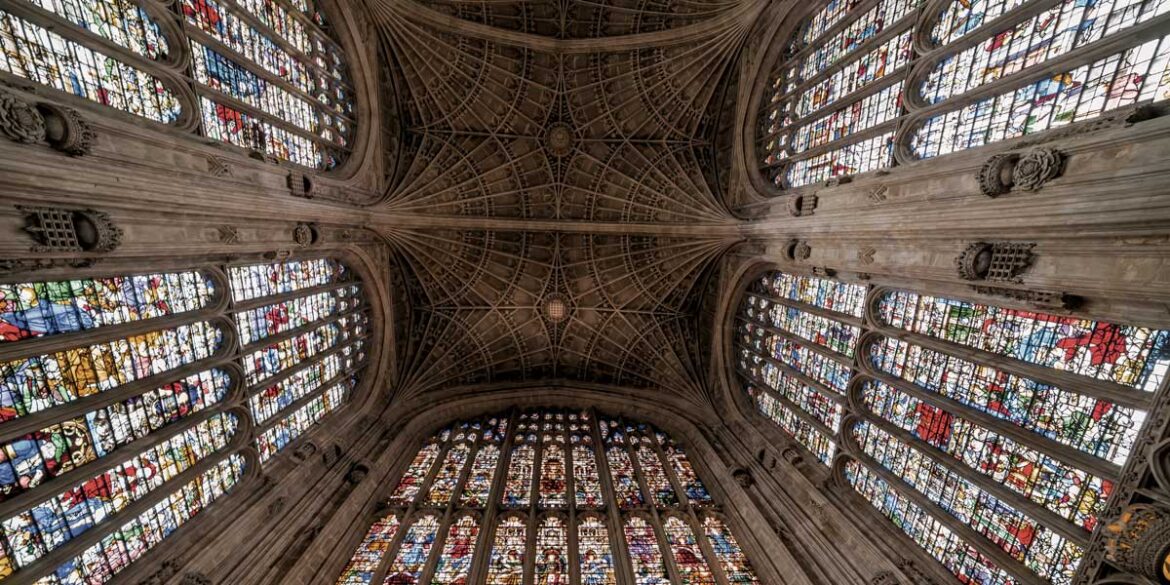Building perfection
Cambridge has an amazing array of architectural gems to explore. Here’s our top ten
Cambridge’s architectural landscape is a tapestry of historical and modern masterpieces. There are 67 Grade I and 47 Grade II listed buildings in the city – the churches and colleges are remarkable, and the newer builds aren’t all that bad either, with examples by Sir Norman Foster and Sir Giles Gilbert Scott. Plus, there are several unusual landmarks – the Grade I listed former Theatre Royal, now part of Cambridge Buddhist Centre; Hobson’s Conduit, a watercourse built in 1610-1614; and several examples of domestic residences that illustrate their creators’ varied architectural ambitions.
Visitors to the city will stumble across these marvellous buildings wherever they turn and no doubt think we are spoilt; our cityscape is certainly marked by style and innovation. So here’s our top ten – please do share your own favourites by email to [email protected]
King’s College Chapel
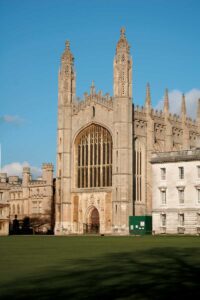 Built 1446–1515
Built 1446–1515
King’s Parade, Cambridge CB2 1ST
Architect: Reginald Ely
Style: Perpendicular English Gothic
Commissioned by King Henry VI, the Grade I listed chapel is renowned for its fan-vaulted ceiling and extensive stained-glass windows. The first stone was said to have been laid by Henry VI himself, but the Wars of the Roses interrupted its construction, so it was completed under King Henry VIII. The magnificent wooden screen separating the nave from the choir was a gift from Henry VIII and Anne Boleyn, featuring their intertwined initials.
Visiting: kings.cam.ac.uk/visit-kings
Bridge of Sighs
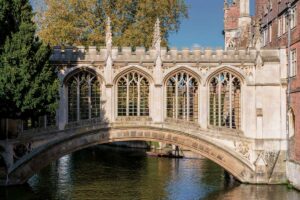 Built 1831
Built 1831
St John’s College, St John’s Street, Cambridge CB2 1TP
Architect: Henry Hutchinson Style: Gothic Revival
Located at St John’s College, this iconic, Grade I listed, covered bridge spans the
River Cam, connecting the college’s Third and New Courts. Built nearly 200 years
ago, it’s the only covered bridge to cross the River Cam and the only college bridge
built in the Victorian Gothic style. Students have pulled the prank of dangling a car
under it on two separate occasions.
Visiting: 2 to 19 Jan 2025, adults £15. See joh.cam.ac.uk/visiting
Mathematical Bridge
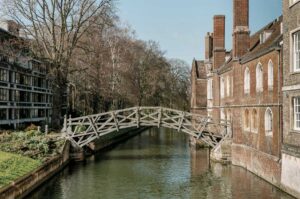 Built 1749; rebuilt 1866 and 1905
Built 1749; rebuilt 1866 and 1905
Queens’ College, Silver Street, Cambridge CB3 9ET
Architect: William Etheridge; built by James Essex
Situated at Queens’ College, this Grade II listed wooden footbridge is famed for its engineering marvel, exhibiting tangential and radial trussing. It’s made from teak wood and uses nuts and bolts in its construction. The bridge is an iconic example of how straight lines can create a curve through precise alignment and tension.
Visiting: 4 Jan to 16 Apr 2025, enter at the Visitors’ Gate
on Queens’ Lane, adults £5. See queens.cam.ac.uk/visiting-the-college/tourist-information
Trinity College’s Great Court
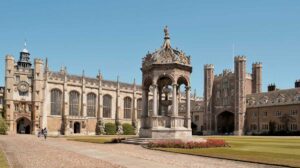 Built 1490-1615
Built 1490-1615
Trinity Street, Cambridge CB2 1TQ
Design: Thomas Nevile Style: Classical Revival
The Great Court at Trinity College is Grade I listed and one of the largest enclosed courts in Europe, with an ornate covered fountain in its centre. The annual Great Court Run is a long-standing tradition where students attempt to circle the court within the time it takes the clock to strike 12 (43 seconds).
Visiting: Guided tours on selected dates, £5. See trin.cam.ac.uk
Schlumberger Gould Research Centre
Built 1985
Madingley Road, Cambridge CB3 0EL
Architect: Michael Hopkins Style: Modern
This Grade II listed building serves as a research facility for the leading oilfield services company Schlumberger. Its innovative design is renowned for the distinctive fabric roof made of Teflon-coated glass fibre and suspended by a network of cables, allowing natural light to permeate the interior and create an airy, open environment. The layout fosters interaction among scientists, through its laboratories, office areas and workshops arranged to encourage collaboration.
The Round Church (Church of the Holy Sepulchre)
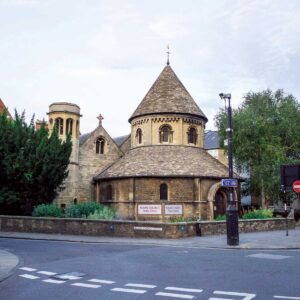 Built circa 1130
Built circa 1130
Bridge Street, Cambridge CB2 1UB
Architect: Unknown
Style: Norman
One of four medieval round churches in England, this Grade I listed building was inspired by Jerusalem’s Church of the Holy Sepulchre. The building’s original purpose is unknown, but it has been suggested that it was used as a wayfarers’ chapel. It was a parish church from at least the mid-13th century until 1994, at which time the congregation had become too large and moved to St Andrew the Great.
Visiting: Adults £3.50. See roundchurchcambridge.org
The Faculty of Law Building
Opened 1995
10 West Road, Cambridge CB3 9DZ
Architect: Norman Foster
Style: Modernist
With its glass roof and open-plan design, the building reflects transparency and accessibility in legal education. While not listed, the building is named after the university’s first full-time vice-chancellor and professor of public law, Sir David Williams. Sir Norman Foster also designed the terminal building at Stansted Airport and the Gherkin in London.
Visiting: See the building from West Road.
Lloyds Bank, Sidney Street
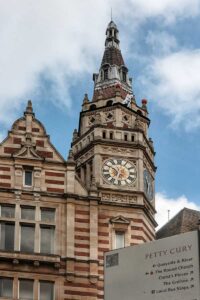 Built 1891
Built 1891
5-1 Sidney Street, Cambridgeshire CB2 3HQ
Architect: Alfred Waterhouse
Style: Dutch renaissance with 1935 neo-Tudor extension
A former millworkers’ bank built for Foster and Company, which owned several mills. The ornate, Grade II listed exterior and Italianate banking hall make the building seem older than it is. Architect Alfred Waterhouse also designed the Natural History Museum and the elaborate gateway at Strangeways prison. Waterhouse was inspired by the High Victorian Gothic style of John Ruskin.
Visiting: See the building from Sidney Street.
Fitzwilliam Museum
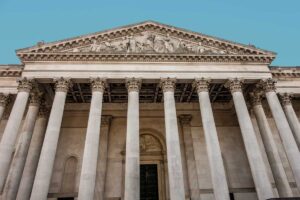 Built 1837–1848
Built 1837–1848
Trumpington Street, Cambridge CB2 1RB
Architect: George Basevi Style: Neoclassical
This elegant, Grade I listed city museum houses a vast collection of art and antiquities bequeathed by founder Richard Fitzwilliam. The collection spans centuries and cultures, including masterpieces by Titian, Van Dyck, Monet, Turner and Gainsborough; sketches by Michelangelo, Rembrandt, Dürer and William Blake; sculpture by Rodin and Barbara Hepworth; manuscripts and rare books; coins and medals; textiles and costumes.
Visiting: Open Tuesday to Sunday; free admission but donations encouraged.
See fitzmuseum.cam.ac.uk/plan-your-visit

